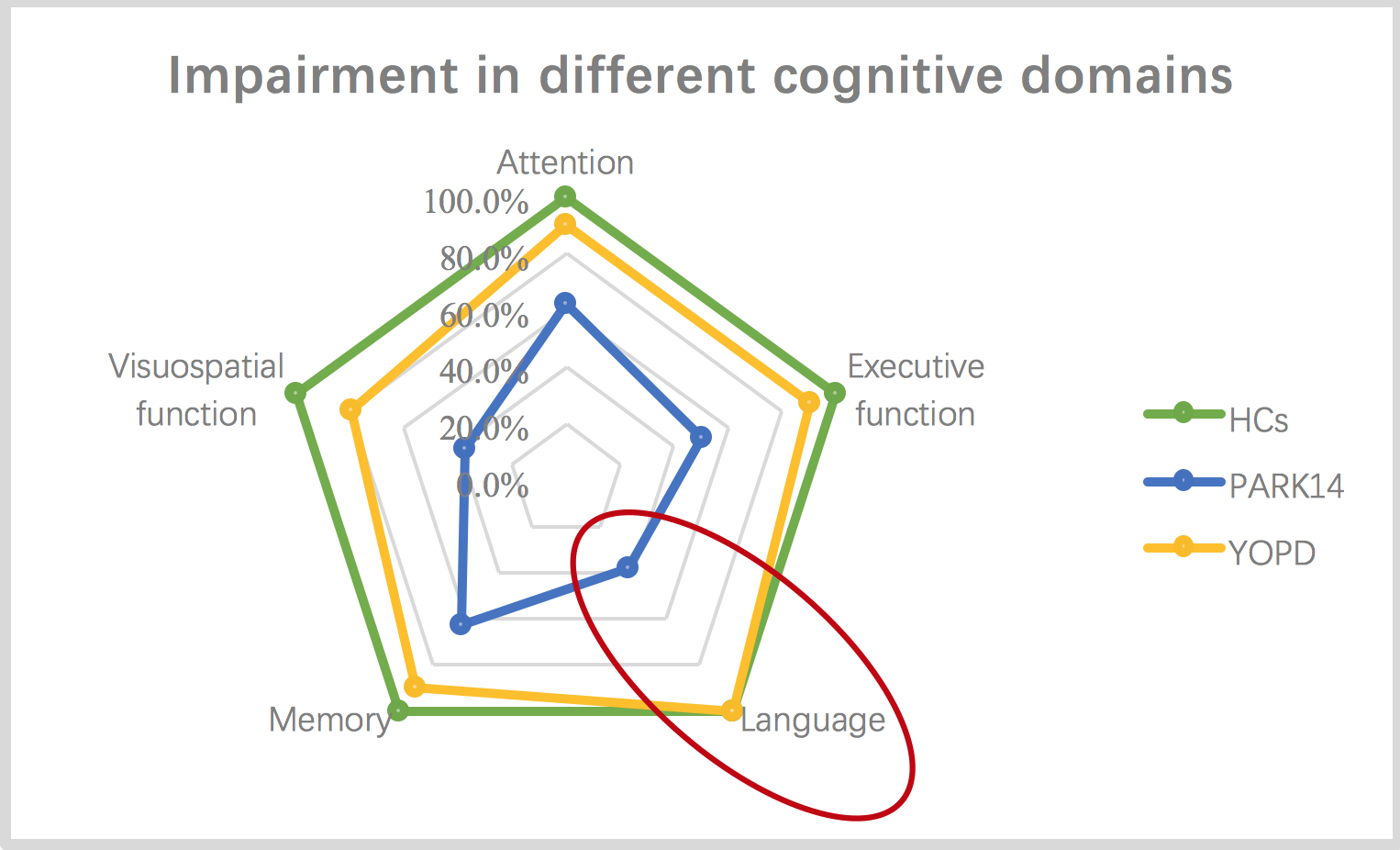Session Information
Date: Monday, October 8, 2018
Session Title: Parkinson's Disease: Genetics
Session Time: 1:15pm-2:45pm
Location: Hall 3FG
Objective: Among young or juvenile onset Parkinson (PD) patients, we assessed cognitive and clinical performances, comparing homozygotes and compound heterozygotes who carry PLA2G6 pathogenic mutations with non-carriers and age-matched healthy controls.
Background: Phospholipase A2 Group 6 (PLA2G6) is the causative gene for three recessively inherited neurodegeneration disease, namely infantile neuroaxonal dystrophy (INAD) and neurodegeneration associated with brain iron accumulation (NBIA) and PLA2G6 -linked juvenile onset dystonia-parkinsonism (PARK14). Although the phenotypic spectrum of PARK14 had different features from classic Parkinson’s disease, no quantitative study has been conducted in comparing clinical manifestations and cognitive profiles between cohorts of PLA2G6-related cases and other young onset Parkinson’s disease cases.
Methods: We collected 10 Chinese patients with homozygous or compound heterozygous PLA2G6 mutations from the outpatient neurology clinics of Huashan Hospital consecutively who met the MDS diagnostic criteria of clinically probable PD or established PD with an age at onset of younger than 40 years old. Pathogenicity of the PLA2G6 mutations was evaluated by enzyme activity. Unified Parkinson Disease Rating Scale Part III (UPDRS-III) and neuropsychological performance of the patients was measured. The neuropsychological scores of age and sex matched healthy controls was also collected.
Results: PLA2G6-related Juvenile onset Parkinson’s disease (PARK14) patients had no statistical difference in age at onset of PD, gender, disease duration and age at examination compared to noncarriers. More pyramid signs (P<0.001), dyskinesia (P=0.019), higher Beck depression inventory scores (P=0.002) and higher RBD questionnaire scores (P=0.046) were observed in PLA2G6 mutation carriers. Carriers developed posture instability (P=0.029) and dyskinesia (P=0.030) more quickly. They performed poorer than noncarriers on the Mini-Mental State Examination (P = 0.005) and were more likely to receive lower scores on other neuropsychological tests. PARK14 patients had a remarkable impairment in language domain (P=0.015). No significant difference was observed in attention, execution, memory and visuospatial cognitive domains.
Conclusions: In this study, PARK14 patients demonstrated poorer cognitive performance and motor performance than did noncarriers, especially in language domain, suggesting a more rapid disease progression and a different pattern of cognitive impairment. A longitudinal follow-up and a functional imaging study is required to confirm these findings.
To cite this abstract in AMA style:
C. Chen, Y.M. Sun, F.T. Liu, S.S. Luo, Z.T. Ding, J.J. Wu, J. Wang. PLA2G6-related juvenile-onset Parkinsonism: clinical features and cognitive profile in a cohort of Chinese patients [abstract]. Mov Disord. 2018; 33 (suppl 2). https://www.mdsabstracts.org/abstract/pla2g6-related-juvenile-onset-parkinsonism-clinical-features-and-cognitive-profile-in-a-cohort-of-chinese-patients/. Accessed December 15, 2025.« Back to 2018 International Congress
MDS Abstracts - https://www.mdsabstracts.org/abstract/pla2g6-related-juvenile-onset-parkinsonism-clinical-features-and-cognitive-profile-in-a-cohort-of-chinese-patients/

